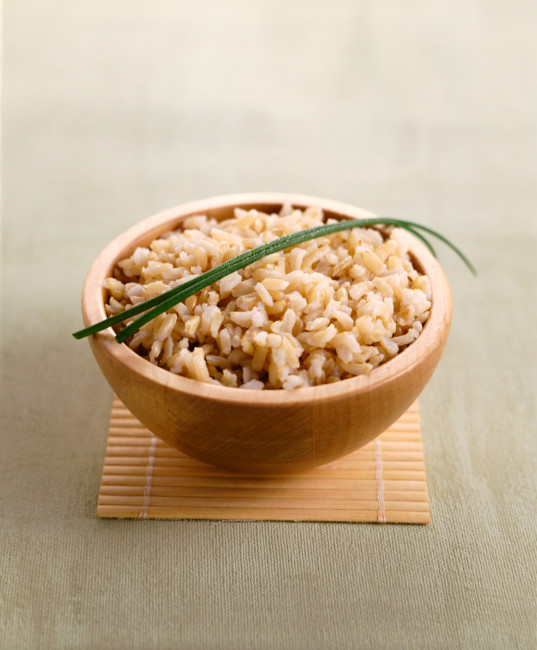Brown Rice May Prevent High Blood Pressure
May 3, 2010
Natural News
By S. L. Baker

The rate of cardiovascular disease is much lower in Japan than in the U.S. and now scientists at the Cardiovascular Research Center and Department of Physiology at Temple University School of Medicine in Philadelphia think they know why. People in Japan eat rice virtually every day and rice — especially the brown and only partially “polished” varieties — contains a natural compound that appears to guard against high blood pressure and heart disease.
Brown rice is already well known as a healthy food choice because it’s a good source of fiber, B vitamins and other nutrients. But new research just presented by Temple University researcher Satoru Eguchi at the American Physiological Society’s Experimental Biology conference held in Anaheim, California, reveals another powerful health benefit. A specific natural compound found in a layer of tissue surrounding grains of brown rice inhibits an endocrine protein known as angiotensin II. In excess, angiotensin II can trigger serious cardiovascular problems.
This is enormously significant news because angiotensin II is a well documented culprit in the development of hypertension and atherosclerosis. Angiotensin II constricts arteries, increases blood pressure and forces the heart to work harder. It also thickens and stiffens the walls of the heart and blood vessels.
Big Pharma has created a huge industry producing angiotensin II receptor blockers (ARBs) — prescription drugs that lower blood pressure by putting the brakes on angiotensin II. Sold under brand names such as Atacand, Teveten, Avapro and Cozaar, the medications are designed to block angiotensin II, thereby relaxing blood vessels so blood pressure is lowered.
But the side effects of these drugs can be serious and even deadly. They include fetal harm (possibly death) if the drugs are taken during pregnancy, dizziness, blurred vision, fainting, decreased sexual ability, infection, chest pain, swelling, trouble breathing and more.The new discovery about rice indicates brown rice or even half-milled rice could be a natural, side-effect free angiotensin II blocker.
Dr. Eguchi, an associate professor of physiology, and his colleagues investigated the subaleurone layer of Japanese rice. Located between the white center of the grain and the brown fibrous outer layer, this sub-layer of rice is loaded with oligosaccharides (complex carbohydrates known to benefit the digestive system) and dietary fibers. But when brown rice is polished to turn it into white rice, this subaleurone layer is ripped off, taking away some of the nutrients. However, the subaleurone layer is preserved not only in brown rice but also in two types of rice popular in Japan — half-milled (Haigamai) rice or incompletely-milled (Kinmemai) rice.
The Temple research team, working with conjunction with scientists at the Wakayama Medical University Department of Pathology and the Nagaoka National College of Technology Department of Materials Engineering in Japan, removed subaleurone tissue from Kinmemai rice and ran a variety of lab tests that demonstrated the components of this rice layer inhibited angiotensin II activity in cultured vascular smooth muscle cells. Bottom line: the subaleurone rice layer could offer powerful protection against high blood pressure and atherosclerosis by blocking the endocrine protein that can trigger those conditions.
“Our research suggests that there is a potential ingredient in rice that may be a good starting point for looking into preventive medicine for cardiovascular diseases,” Dr. Eguchi said in a media statement. “We hope to present an additional health benefit of consuming half-milled or brown rice (as opposed to white rice) as part of a regular diet.”
Reacties
Een reactie posten